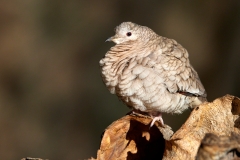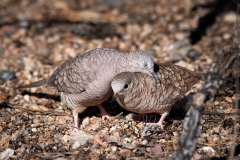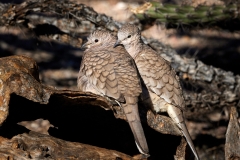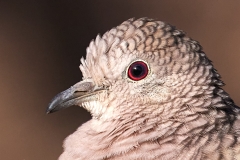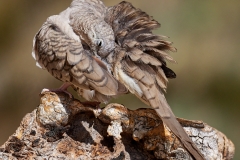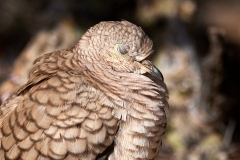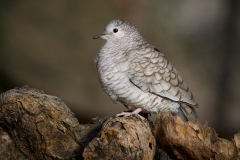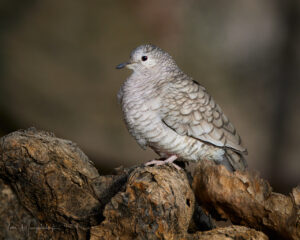 Unless you look carefully, you may never know you’ve seen an Inca Dove even though they are relatively common throughout the Sonoran Desert. At first glance, they look much like the more common Mourning Dove. But, these little desert delights are especially distinctive from other similar dove species.
Unless you look carefully, you may never know you’ve seen an Inca Dove even though they are relatively common throughout the Sonoran Desert. At first glance, they look much like the more common Mourning Dove. But, these little desert delights are especially distinctive from other similar dove species.
In a word, they’re endearing. Their diminutive size, unusual feather pattern and partnering behavior make them a treat for birders and photographers, if you can find them. Although much smaller than their cousins the Mourning Dove, they share that bird’s general gray coloring. However, the Inca Dove’s feathers are layered much like fish scales or shingles on a roof and each feather has shaded gray tones ending in a dark gray tip. They lead a monogamous lifestyle (sometimes in a life-long relationship), and you will usually find them close to their significant other softly cooing and bowing to show their affection.
Inca Doves love the Sonoran Desert’s hot climate and don’t feel comfortable in colder temperatures. During desert cold spells or chilly mornings, an Inca Dove twosome will huddle close together with their mate to conserve their body heat. In fact, if the doves are part of a larger group, they will cluster together in a tiered pyramid formation with as many as twelve birds stacked one on top of another.
A few closing bits of Inca Dove trivia:
- A flock of Inca Doves is sometimes referred to as a “dule”. Dule is derived from the French word “deuil” which translates to “mourning.”
- It’s said that early and thirsty pioneers in the desert southwest would look for Inca Doves as they flew by in the hope that the birds would lead them to nearby water. According to some accounts, the birds could fly up to ten miles in search of water when their normal diet of seeds and grains did not provide them with enough liquid.
- Although named Inca Dove, the dove is not found in the ancient Inca Empire of South America. Instead, the Inca Dove is found in roughly what was the Aztec Empire of central Mexico and northward into the southwestern United States. Given this territorial inaccuracy, a proposal was made in 2011 by a member of the American Ornithologists’ Union’s North American Classification Committee to change the name of the Inca Dove to Aztec Dove. The proposal failed.
Click on the thumbnail photos below to cycle through and view the captioned larger images.

